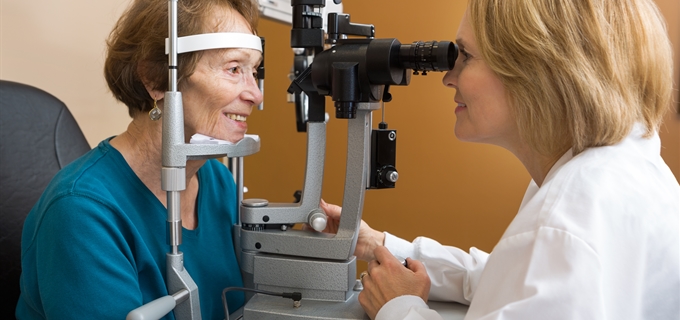Get News & Updates Directly To Your Inbox


Get News & Updates Directly To Your Inbox
Delicious recipes, helpful cooking and nutrition tips. Find food preparation videos and "ask the dietitian!"

Find A Doctor Or Hospital In Your Network.
 For older adults with diabetes, vision loss can be a serious worry. Left untreated, diabetes can lead to blurry vision, even to blindness. Fortunately, with timely treatment, careful control of blood sugar and regular follow-ups, the risk for vision loss can be reduced or even eliminated.
For older adults with diabetes, vision loss can be a serious worry. Left untreated, diabetes can lead to blurry vision, even to blindness. Fortunately, with timely treatment, careful control of blood sugar and regular follow-ups, the risk for vision loss can be reduced or even eliminated.The most common form of vision loss is diabetic retinopathy. ![]() High blood sugar causes tiny blood vessels in the eye to grow and leak blood and other fluids onto the retina.
High blood sugar causes tiny blood vessels in the eye to grow and leak blood and other fluids onto the retina.
Symptoms include:
In the early stages, people may not experience any symptoms. That’s why it’s important to have an eye exam every year. Regular vision tests can detect problems early. During a yearly exam, doctors will typically check for:
Diabetics can keep blood sugar and blood pressure levels under control to minimize damage to eyesight. It also helps to take all medications as prescribed, stay active and eat healthy foods. But the best way to prevent diabetic retinopathy is a regular eye exam.
During your exam, the doctor can also test for other disorders identified by the National Eye Institute, ![]() including:
including:
Even if you don’t have symptoms, it’s important to get your vision tested. While most diabetes-related eye problems are often minor, blindness from complications is still a major issue.
The American Diabetes Association (ADA) ![]() says many people with diabetes may develop “floaters” (dark spots or strings floating in your vision), blurred eyesight or less-than-perfect color vision. The ADA encourages people not to be lulled into a false sense of security. To help those at risk, they offer ways to avoid complications
says many people with diabetes may develop “floaters” (dark spots or strings floating in your vision), blurred eyesight or less-than-perfect color vision. The ADA encourages people not to be lulled into a false sense of security. To help those at risk, they offer ways to avoid complications ![]() that can lead to blindness.
that can lead to blindness.
Major eye disorders linked to diabetes include:
See your eye doctor at least once a year if you have any type of diabetes and more often if your doctor advises. It’s a small price to pay to keep your eyesight.
Originally published 5/14/2018; Revised 2019, 2021, 2023
Blue Cross and Blue Shield of Oklahoma, a Division of Health Care Service Corporation,
a Mutual Legal Reserve Company, an Independent Licensee of the Blue Cross and Blue Shield Association
© Copyright 2025 Health Care Service Corporation. All Rights Reserved.
Verint is an operating division of Verint Americas, Inc., an independent company that provides and hosts an online community platform for blogging and access to social media for Blue Cross and Blue Shield of Oklahoma.
![]() File is in portable document format (PDF). To view this file, you may need to install a PDF reader program. Most PDF readers are a free download. One option is Adobe® Reader® which has a built-in screen reader. Other Adobe accessibility tools and information can be downloaded at https://www.adobe.com/trust/accessibility.html.
File is in portable document format (PDF). To view this file, you may need to install a PDF reader program. Most PDF readers are a free download. One option is Adobe® Reader® which has a built-in screen reader. Other Adobe accessibility tools and information can be downloaded at https://www.adobe.com/trust/accessibility.html. ![]()
![]() You are leaving this website/app ("site"). This new site may be offered by a vendor or an independent third party. The site may also contain non-Medicare related information. Some sites may require you to agree to their terms of use and privacy policy.
You are leaving this website/app ("site"). This new site may be offered by a vendor or an independent third party. The site may also contain non-Medicare related information. Some sites may require you to agree to their terms of use and privacy policy.
Powered by Verint
Last Updated 10012018
Y0096_WEB_OK_CONNECT19_C